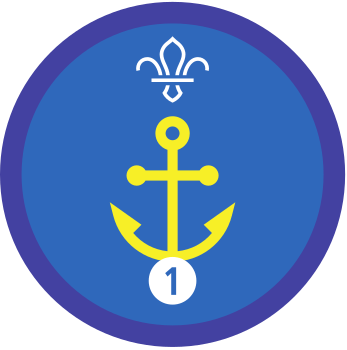
Play water you taking

Before you begin
- Use the safety checklist to help you plan and risk assess your activity. Additional help to carry out your risk assessment, including examples can be found here. Don’t forget to make sure all young people and adults involved in the activity know how to take part safely.
- Make sure you’ll have enough adult helpers. You may need some parents and carers to help if you’re short on helpers.
Play the game
- Gather everyone in a circle.
- Explain that you're going to play a game that helps us to learn what equipment we need for different water-based activities.
- Go around the circle and people different water sports – some ideas could be windsurfing, kayaking, stand-up paddle boarding, swimming, rowing, rafting, and so on.
- You might want to theme the game around any sports you’re going to try soon to help check everyone’s understanding.
- Tell everyone which side of the space is ‘take it’ and which side is ‘leave it’.
- Everyone should stand in the middle.
- When ready, someone should call out a piece of equipment that’s used for water sports (or to keep people safe when they’re doing water sports).
- Everyone should move to the ‘take it’ or ‘leave it’ side of the space, depending on whether they think they need the item to do their activity.
- They could even mime using the equipment as they move. For example, if the person leading the game called ‘paddle’, someone whose activity is kayaking would mime paddling over to the ‘take it’ side of the space.
- Once everyone’s reached a side of the space, check that everyone with the same activity is on the same side.
- If they’re not, talk ask people why they decided the side they're on – should they take or leave the item that was called?
- Everyone should return to the middle.
- Keep playing the game until everyone's confident they know what to use for the different activities.
- You could swap over what water activities people have been assigned too.
These are just suggestions to get you started. You can make up or add your own.
- Helmets: pat your head
- Paddles: mime paddling on one side and then the other
- Lifejackets: pretend to float on your back
- Wetsuit: mime pulling on a wetsuit
- Buoyancy aids: bob up and down as though you’re floating and swimming
- Surfboard: Put your arms out and pretend to surf the waves
Reflection
This activity helped you think about what you need for lots of different water activities. Was it easy or hard? Did you have to think about some of the items? Which was the hardest or trickiest one?
Do you think it helps to think about what you’ll need to do and bring before you try a new activity?
Do you feel more or less ready for trying a new watersport after this game? What else makes it easier to try new things?
This activity was also a chance to be active. What kind of movements did you use in this activity? Would you use any of these movements when doing water sports? Which movement was the most fun? Were any tricky? Do you think water sports are a fun way to be active?
Safety
All activities must be safely managed. You must complete a thorough risk assessment and take appropriate steps to reduce risk. Use the safety checklist to help you plan and risk assess your activity. Always get approval for the activity, and have suitable supervision and an InTouch process.
- Start off with just one or two activities, so everyone can help each other decide and it’s not too confusing. Make it trickier by giving out more activities, so different people end up at different sides for each item.
- Add in items no one should take – like a laptop, or an umbrella.
- You could play more than once, giving people different activities each time. Players could take it in turns to call the items.
People could work in pairs or small groups if it makes it easier for them. Make sure the actions you suggest work for everyone. You could play the game without moving by pointing to the sides of the space, or holding up different coloured cards.
All Scout activities should be inclusive and accessible.
This activity could help you achieve stage two of the Nautical Skills Staged Activity Badge if you made sure the items covered basic equipment, unsuitable clothing, and safety equipment (and took time to talk about it afterwards).
You could book a visit from the RNLI to learn about water safety.
Young people can choose the water sports that are used – why not choose ones you want to try?
